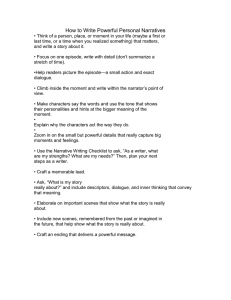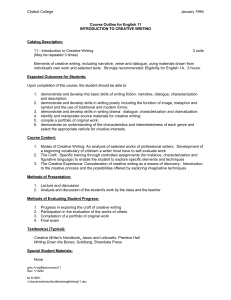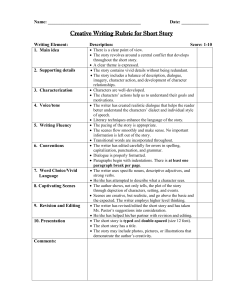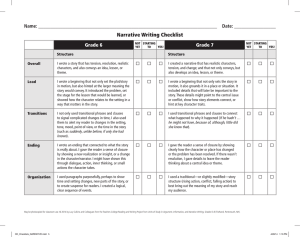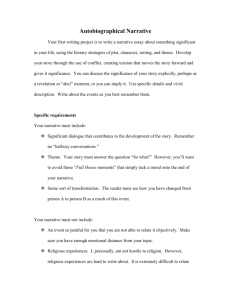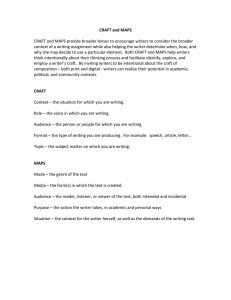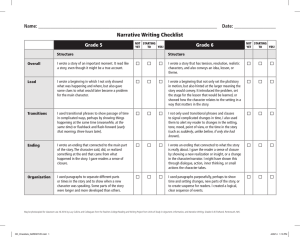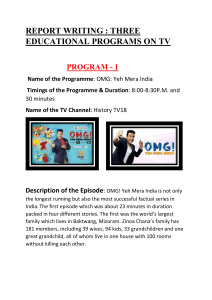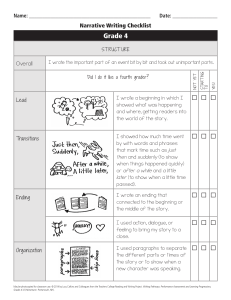How to Write Powerful Personal Narratives
advertisement
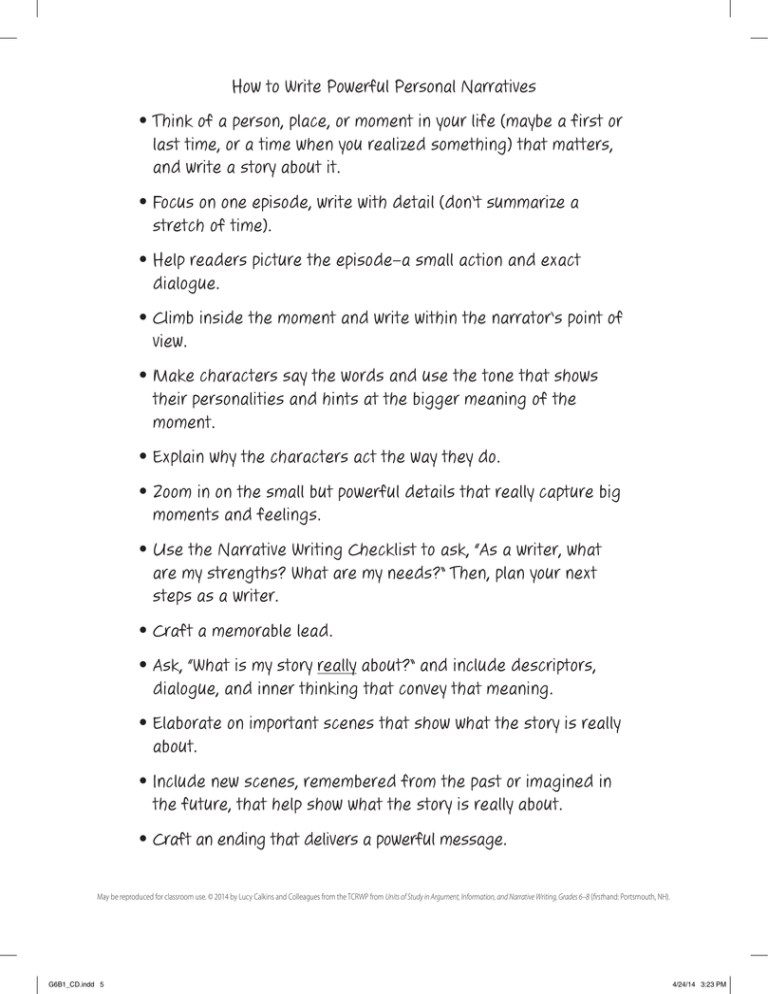
How to Write Powerful Personal Narratives •Think of a person, place, or moment in your life (maybe a first or last time, or a time when you realized something) that matters, and write a story about it. •Focus on one episode, write with detail (don’t summarize a stretch of time). •Help readers picture the episode—a small action and exact dialogue. •Climb inside the moment and write within the narrator’s point of view. •Make characters say the words and use the tone that shows their personalities and hints at the bigger meaning of the moment. •Explain why the characters act the way they do. •Zoom in on the small but powerful details that really capture big moments and feelings. •Use the Narrative Writing Checklist to ask, “As a writer, what are my strengths? What are my needs?” Then, plan your next steps as a writer. •Craft a memorable lead. •Ask, “What is my story really about?” and include descriptors, dialogue, and inner thinking that convey that meaning. •Elaborate on important scenes that show what the story is really about. •Include new scenes, remembered from the past or imagined in the future, that help show what the story is really about. •Craft an ending that delivers a powerful message. May be reproduced for classroom use. © 2014 by Lucy Calkins and Colleagues from the TCRWP from Units of Study in Argument, Information, and Narrative Writing, Grades 6–8 (firsthand: Portsmouth, NH). G6B1_CD.indd 5 4/24/14 3:23 PM
